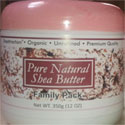Rising prices of major feed ingredients like Maize, Fish Meal and Soya beans plus dangers associated with aflatoxin complications in use of groundnut cake, have driven many farm business owners to explore alternative feed ingredients.
But in doing so, they also have to enter uncharted territory. Locally available ingredients which are often cheaper, typically tend to be less well documented in terms of their value to animals . Farmers often have to settle for “typical values” from published reports, or send samples to the laboratory.
Different feed formulation methods exist, such as linear programming, Pearson square, and stochastic programming.
The farmer’s choice of method must be guided by the purpose of the diet s/he aims to formulate. For instance, catfish and poultry have amino acid needs that vary greatly from that of pigs.
The farmer will have to take that into account in formulating his/her rations. But that can be a tasking process!
Low Cost Automated Feed Formulation is Needed
Software automation can make that process less tasking, and more reliable in terms of accuracy.
But feed formulation software tend to be pricey (See email excerpt).
In addition, some – due to legal requirements – limit ingredients types usable (see sidebar) .
That’s why more farmers now adopt manual Excel forms developed by researchers/extension specialists.
The Threat of Avoidable Feed Formulation Errors
But using MS Excel manually for a serious (and sensitive) task like feed formulation requires sound Excel user skills .
Unfortunately, many users often assume they know enough. That mental attitude sometimes lead to avoidable errors, that are hard to detect – with potentially costly consequences in the case of a farm business.
One Example:
A client’s secretary placed a file on the PC keyboard, to answer the phone. A formula cell in the spreadsheet she was working on got overwritten in the process, with a value that coincidentally looked real.
The error went unnoticed until the next week, when her boss asked why the new total was exactly the same, despite a totally different expense profile. This can happen to a farm based user too!
Rejuvenation of smallholder farming in developing economies depends greatly on empowering all stakeholders.
This will involve helping them entrench continuous improvement and best practice systems based primarily on indigenous knowledge systems they discover, and successfully implement.
Firm management of expenses is crucial to profit making in any business – including farming. For livestock farmers, feeding expenses constitute the greatest concern.
That’s why working towards least cost ration formulation, by exploring low cost alternative ingredients, is critical. It cannot be done haphazardly – otherwise, costly mistakes could result.
PC based automation can be used to cost-effectively derive accurate ration formulas.
Laudable efforts have been made by extension specialists, to develop flexible MS Excel based feed formulation resources for farmers.
It must however be noted that farmers need more time/effort saving, and robust error-resistant solutions, to derive ration formulas that yield profitable performance.
The customizable Excel-VB driven Ration Formulator™ (that I sell along with my popular Feed Formulation Handbook) is presented as an example of what is possible in the International Agribusiness paper I got paid to write in 2013 – from which THIS article was excerpted.

![Image: [Annotated] Cover of Agribusiness Research Paper I got paid to write in December 2013 by a European Union funded NGO based in Holland. It's titled 'Adoption of PC-Based Feed Formulation Methods by Farmers, Feed Manufacturers and Extension Professionals, in South West Nigeria.'](http://tayosolagbade.com/sdnuggets/wp-content/uploads/2015/08/AgribizPDF.png)








Warning: count(): Parameter must be an array or an object that implements Countable in /home1/tayoswdg/public_html/sdnuggets/wp-includes/class-wp-comment-query.php on line 399